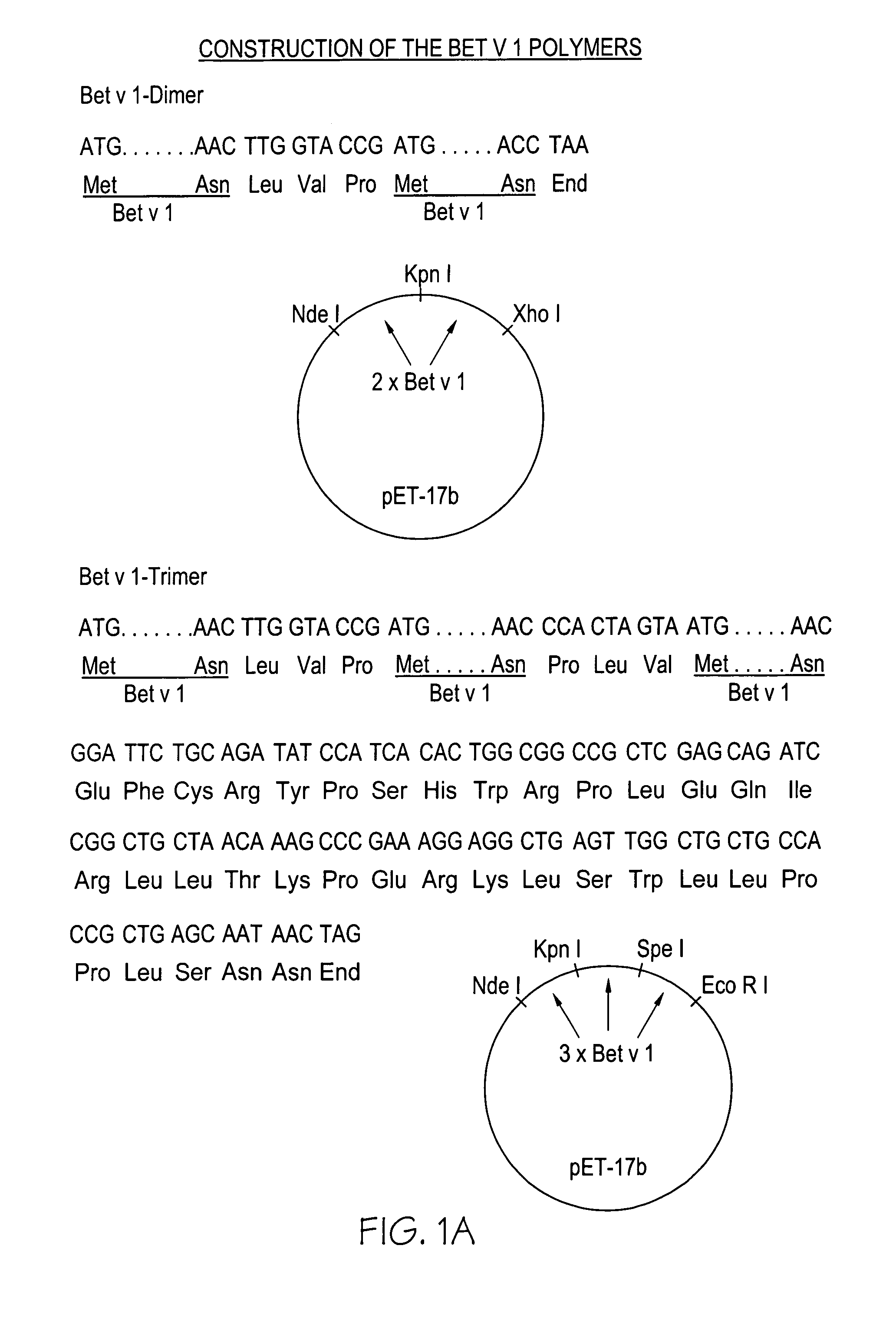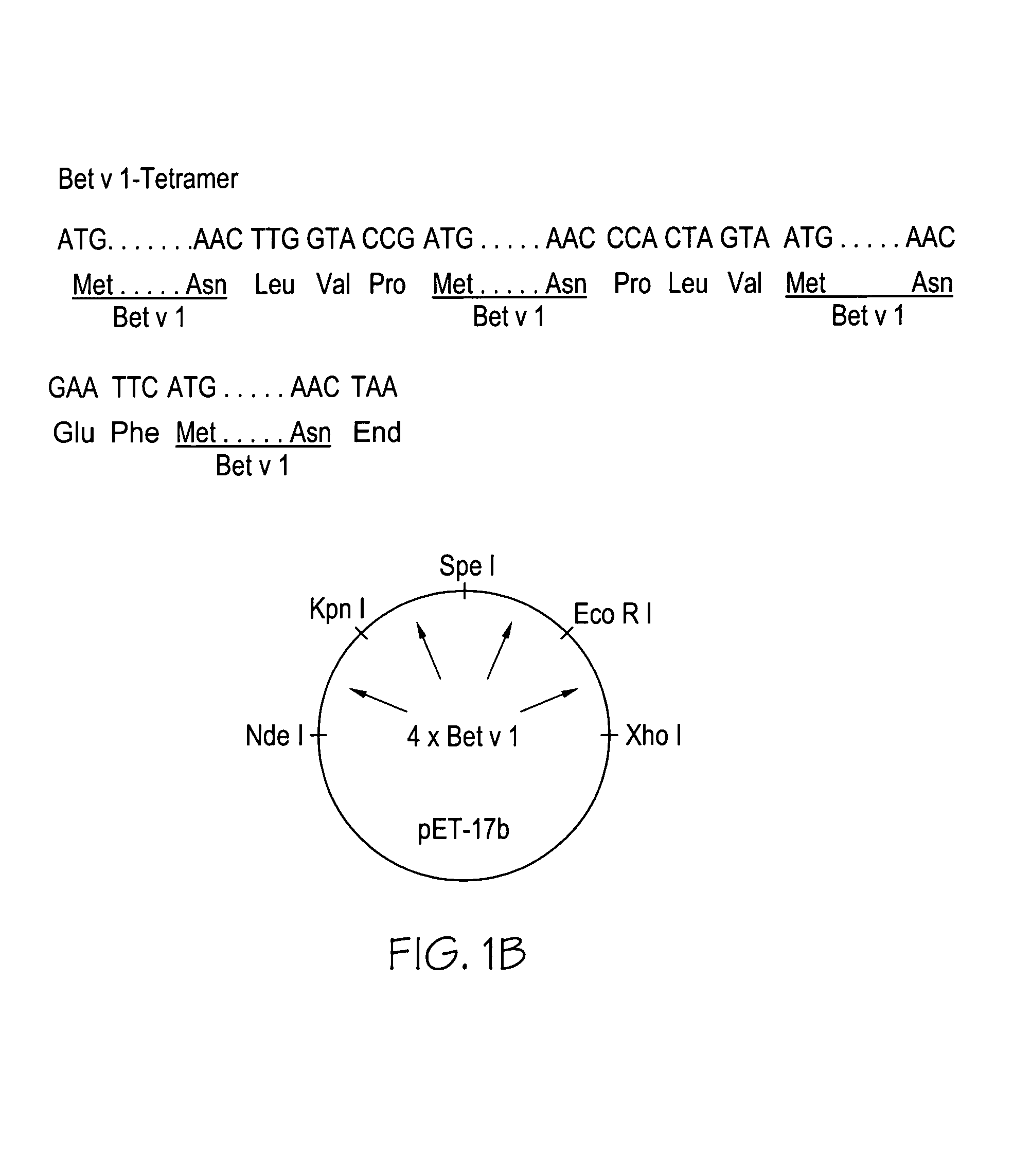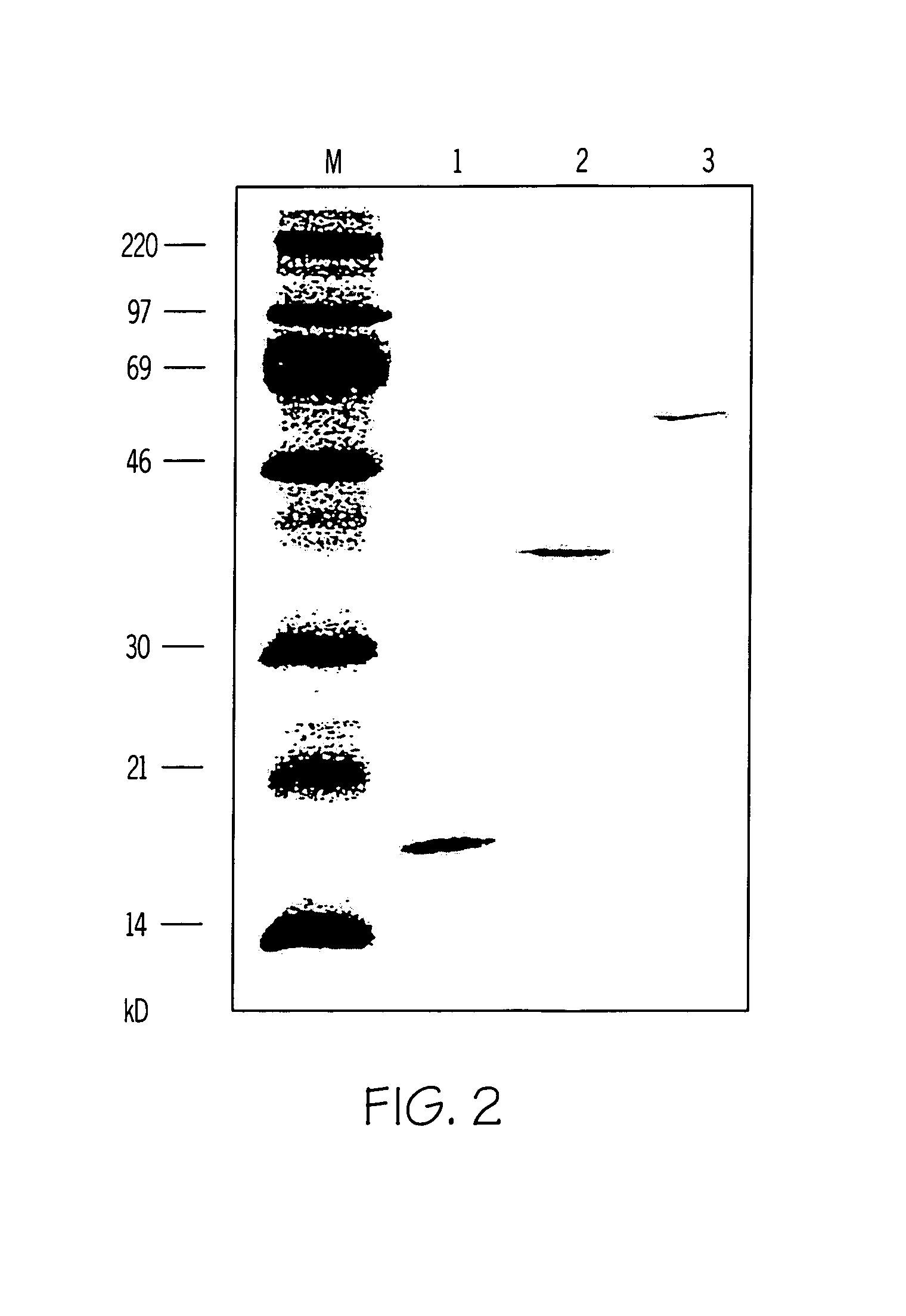Non-anaphylactic forms of allergens and their use
a technology of allergens and non-anaphylactic forms, which is applied in the direction of immunological disorders, drug compositions, peptides, etc., can solve problems such as anaphylactic side effects
- Summary
- Abstract
- Description
- Claims
- Application Information
AI Technical Summary
Benefits of technology
Problems solved by technology
Method used
Image
Examples
example 1
Bet v 1 Polymers
Construction of the Bet v 1-polymers
[0027]The Bet v 1-cDNA (Breiteneder et al., “The gene coding for the major birch pollen allergen Bet v 1 is highly homologous to a pea resistance response gene”, EMBO J. 8 (1989) 1935–1938) was PCR-amplified with the following oligonucleotide primers:
[0028]
Bet v 1-dimer:For construction of the first Bet v 1-segment: 5′GAG GAA TTC CAT ATG GGT GTT TTC AAT TAC3′(SEQ ID NO:1) Eco R I Nde I 5′CGG GGT ACC AAG TTG TAG GCA TCG GAG TG3′(SEQ ID NO:2) Kpn IFor construction of the second Bet v 1-segment: 5′CGG GGT ACC GAT GGG TGT TTT CAA TTA C3′(SEQ ID NO:3) Kpn I 5′CCG GAA TTC CCG CTC GAG CTA TTA GTT GTA GGC ATC GGA GTG3′(SEQ ID NO:4) Eco R I Xho I
[0029]Bet v 1-trimer:
[0030]The first Bet v 1-segment: The same primers were used as for construction of the first segment of Bet v 1-dimer.
[0031]
Second Bet v 1-segment: SEQ ID NO:5: 5′CGG GGT ACC GAT GGG TGT TTT CAA TTA C3′ Kpn I SEQ ID NO:6: ...
example 2
Mapping the Binding Site of Antibodies in Bet v 1
[0065]FIG. 8: Two monoclonal anti-Bet v 1-antibodies (moAb A and B) were used together with three synthetic Bet v 1-derived peptides were used in ELISA. The sequences of the three peptides are shown in the lower part of the figure and corresponds to aa 49–60 (SEQ ID NO:19) (p17), aa 52–63 (SEQ ID NO:20) (p18) and aa 55–66 (SEQ ID NO:21) (p19) of Bet v 1. The peptides were tested for binding to the two Bet v Ispecific monoclonals. The OD values are displayed on the y-axis. Both moAbs bind to the peptides p18 and p19, which are mapped to the first half of Bet v 1.
[0066]Table 3. The full table is given at the end of the descriptive part. Monoclonal anti-Bet v 1 antibodies (A,B) inhibit binding of human IgE to recombinant Bet v 1. Dot-blotted Bet v 1 was preincubated with MoAb A and B prior to probing with serum IgE from 60 Bet v 1 allergic individuals. Bound IgE was detected with 125I-labelled anti-human IgE antibodies and quantified by ...
example 3
Two Non-anaphylactic Recombinant Fragments Bet v 1
[0067]See further Vrtala et al., “Conversion of the major birch pollen allergen, Bet v 1, into two non-anaphylactic T cell epitope containing fragments”, J. Clin. Invest. 99(7) April 1997) 1673–1681.
Methods
[0068]Sera from allergic patients, antibodies, protein extracts and E. coli strains. Sera from birch pollen allergic patients and control individuals were characterized by RAST and testing with recombinant allergens as described (Valenta et al., J. Allergy Clin. Immunol. 88 (1991) 889–894; Valenta etal., Int. Arch. Allergy Immunol. 97 (1992) 287–294). In addition all patients were characterized by case history and skin pricl test. The mouse monoclonal antibody moab 14 with specificity for aa 40–65 of Bet v 1 is described (Lebecque et al., J. Allergy Clin. Immunol. in press). Natural birch pollen extract was prepared as described (Vrtala et al., Int. Arch. Allergy Immunol. 102 (1993) 160–169). Plasmid pET-17b containing the ampicill...
PUM
| Property | Measurement | Unit |
|---|---|---|
| pH | aaaaa | aaaaa |
| pH | aaaaa | aaaaa |
| optical densities | aaaaa | aaaaa |
Abstract
Description
Claims
Application Information
 Login to View More
Login to View More - R&D
- Intellectual Property
- Life Sciences
- Materials
- Tech Scout
- Unparalleled Data Quality
- Higher Quality Content
- 60% Fewer Hallucinations
Browse by: Latest US Patents, China's latest patents, Technical Efficacy Thesaurus, Application Domain, Technology Topic, Popular Technical Reports.
© 2025 PatSnap. All rights reserved.Legal|Privacy policy|Modern Slavery Act Transparency Statement|Sitemap|About US| Contact US: help@patsnap.com



